64 Vascular vs Nonvascular
Now we will take a closer look at key groups of land plants that are still growing today.
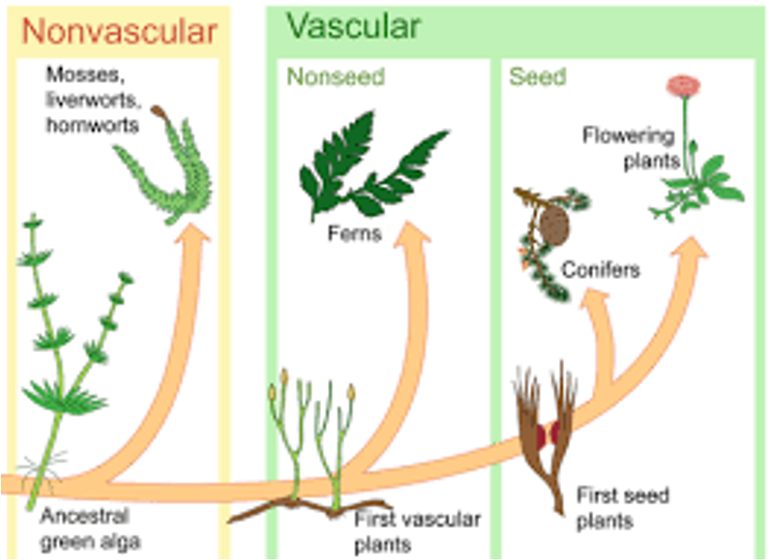
The divisions shown here naturally fall into two groups – vascular and nonvascular.
Most living land plant species are vascular and are either spore (blue) or seed (purple) producers.
Overview of plant divisions with living members
The vascular plants are shown in yellow and non-vascular are shown in green.
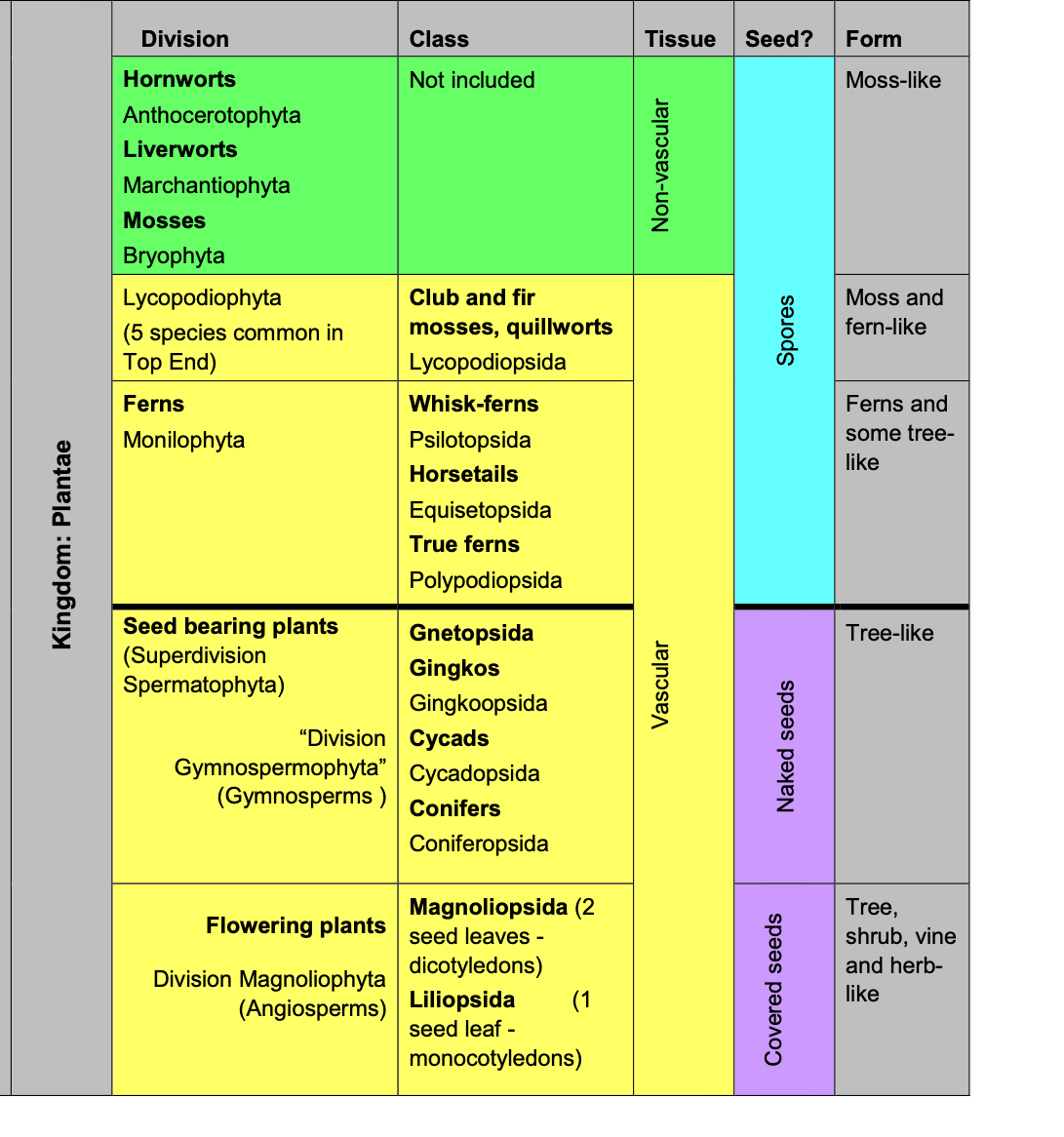
Review of the vascular system
A vascular system is very important for land plants. It consists of special tissues that transport essential material from one part of the plant to another and support the body of the plant against gravity. The system works the same way as the veins and arteries of the human circulatory system and the bones in our skeleton. It is made up of two organs:
- Xylem – moves water and solutes from the roots to the leaves and
- Phloem – moves food from leaves to the rest of the plant.
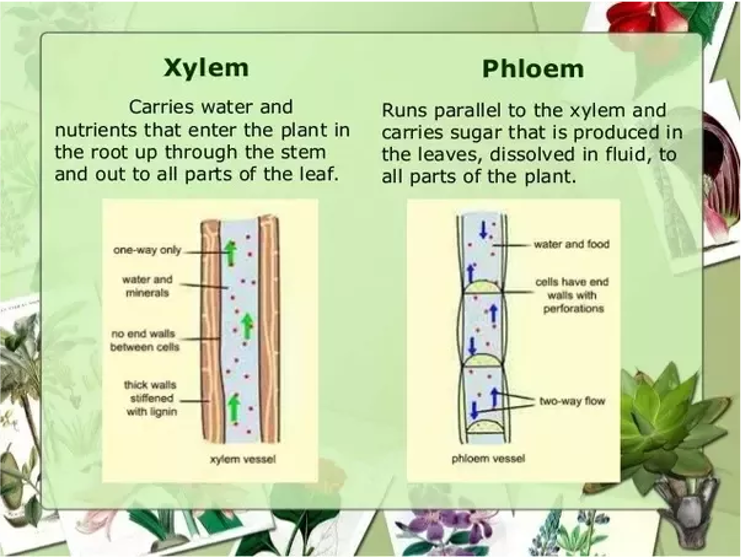
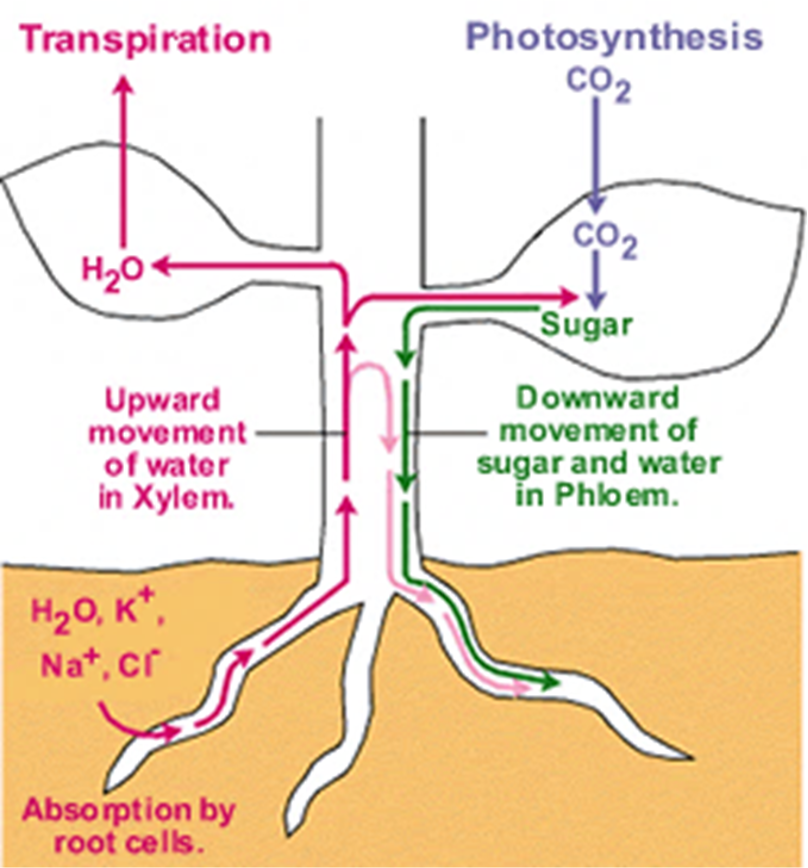
Nonvascular plants
Many people tend to overlook this group of plants.
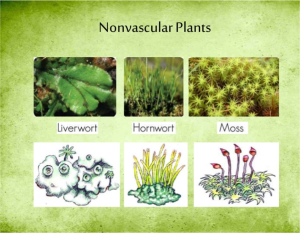
Hornworts, liverworts and mosses are the only groups of nonvascular plants we still see growing today. Fossils suggest these first appeared some 450 million years ago and have remained almost unchanged over much of that time.
They are simple plants that are flowerless – they reproduce from spores. None have true leaves, stems or roots.
Root-like structures or rhizoids anchor the plant but do not carry out much absorption.
Lack of a lignified vascular system means most species are small.
These two traits together mean they must live in moist areas.
